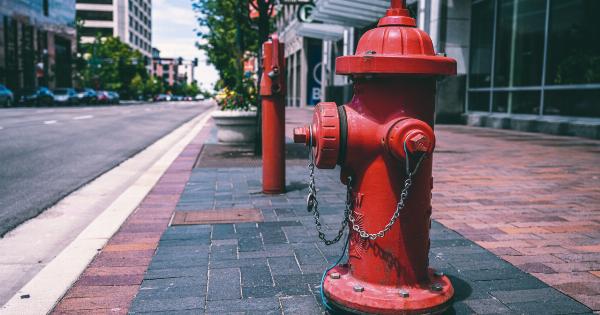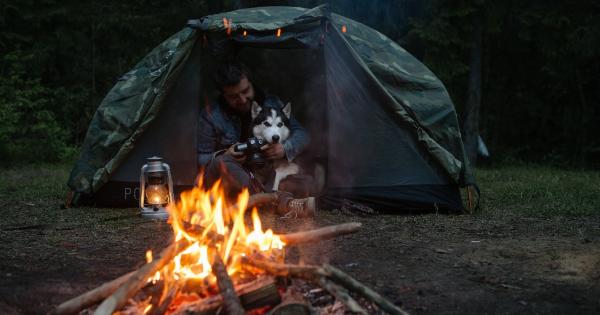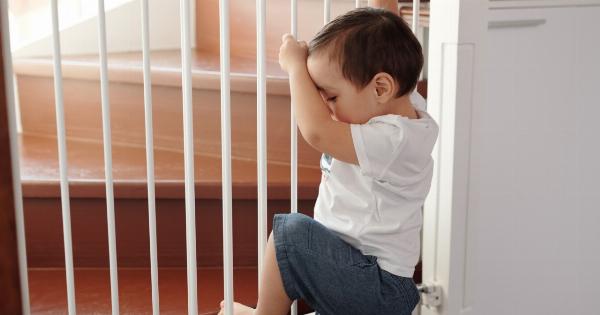As a parent, the safety of your child is a top priority. While accidents can happen anywhere, it is essential to create a safe environment for your kids at home.
By being proactive and taking preventive measures, you can significantly reduce the risk of accidents and injuries. In this article, we will discuss some important tips to avoid accidents for kids at home.
1. Childproofing the House
The first step in ensuring a safe home environment is to childproof your house. This involves identifying potential hazards and taking necessary precautions to eliminate or minimize them.
Here are some areas you should focus on when childproofing your home:.
- Install safety gates at the top and bottom of staircases to prevent falls.
- Cover electrical outlets with safety caps or plates to prevent electrical shocks.
- Secure heavy furniture, such as bookshelves or televisions, to the wall to avoid tipping over.
- Keep hazardous substances, such as cleaning products or medications, out of reach or locked away.
- Use corner guards or cushioning materials on sharp-edged furniture to prevent injuries.
- Place safety locks on cabinets and drawers to keep dangerous objects or chemicals away from children.
- Use doorstops or finger guards to prevent trapped fingers from slamming doors.
2. Fire Safety
Fire safety is a crucial aspect of keeping kids safe at home. Teach your children about fire safety measures and make sure they know what to do in case of a fire. Here are some fire safety tips for kids:.
- Install smoke detectors on every level of your home and test them regularly.
- Teach children to stay low and crawl under smoke in case of a fire.
- Have a fire escape plan and practice it with your kids regularly.
- Keep lighters, matches, and flammable materials out of reach or locked away.
- Store a fire extinguisher in an easily accessible place and teach older kids how to use it.
3. Kitchen Safety
The kitchen can be a hazardous area for kids due to hot surfaces, sharp objects, and potential burns. Implement these kitchen safety measures to minimize risks:.
- Keep hot pots and pans away from the edges of countertops and stove.
- Turn pot handles toward the back of the stove to prevent accidental spills.
- Keep sharp knives and utensils locked away or in a childproof drawer.
- Use stove knob covers to prevent curious kids from turning on the burners.
- Store cleaning products and chemicals in locked cabinets, away from the reach of children.
- Supervise kids closely when they are in the kitchen and teach them about the dangers of kitchen appliances.
4. Bathroom Safety
Bathrooms can present various potential hazards for children. Here are some bathroom safety tips to keep in mind:.
- Never leave a child alone in the bathroom, especially in the bathtub.
- Always test the water temperature before placing a child in the bathtub to prevent scalds or burns.
- Secure toilet lids with a latch to prevent drowning or accidental falls.
- Keep medications, cleaning supplies, and personal care products out of reach or locked away.
- Install non-slip bath mats or decals to prevent slipping in the bathtub or shower.
5. Window Safety
Windows can be a potential source of accidents for children. Take these precautions to ensure window safety:.
- Install window guards or safety netting to prevent falls, especially in rooms above the ground floor.
- Do not place furniture near windows that children can climb on.
- Keep windows locked or use window stops to prevent children from opening them too wide.
6. Electrical Safety
Electrical hazards can be dangerous for kids. Follow these electrical safety tips:.
- Cover unused electrical outlets with safety caps.
- Teach children not to touch electrical appliances with wet hands.
- Keep cords and wires out of reach or securely fastened to prevent tripping or accidental pulling of appliances.
- Do not overload electrical outlets or use damaged cords or plugs.
- Teach older children about electrical safety and the potential risks associated with misusing electrical devices.
7. Poison Prevention
Preventing accidental poisoning is crucial when it comes to child safety. Take these steps to avoid poisoning hazards:.
- Keep all medications, cleaning products, and chemicals locked away or stored out of reach.
- Store poisonous substances in their original containers with child-resistant caps.
- Do not refer to medicine as “candy” to avoid confusion or accidental consumption.
- Teach children about the dangers of consuming substances without permission.
- Post the poison control helpline number in a visible place in your home.
8. Outdoor Safety
Outdoor play areas also require safety precautions. Keep your children safe in outdoor spaces by following these guidelines:.
- Inspect outdoor play equipment regularly for any damages or hazards.
- Install soft and shock-absorbing surfaces, such as mulch or rubber, under play equipment to minimize injuries from falls.
- Ensure the play area is adequately fenced and gated to prevent access to busy roads or unsafe areas.
- Supervise children while they are playing outside, especially near water bodies or swimming pools.
9. First Aid Knowledge
Even with all preventive measures in place, accidents can still happen. It is essential for parents to have basic knowledge of first aid to provide immediate assistance in case of an injury.
Consider learning CPR and basic first aid techniques to handle emergencies.
10. Teaching Safe Behavior
Apart from creating a safe environment, teach your children about safe behaviors and habits. Instill these important safety lessons in their daily lives:.
- Teach children to always wear a helmet while riding a bike or participating in any wheeled activities.
- Inculcate good hygiene habits, such as regular handwashing, to prevent illnesses.
- Teach children about stranger danger and the importance of not talking to or going with unknown adults.
- Teach them about road safety and the importance of using crosswalks and looking both ways before crossing the road.
- Encourage open communication and make sure your children feel comfortable discussing any safety concerns or issues with you.
By implementing these safety measures, you can create a secure environment for your children at home.
Remember that childproofing and teaching safe behavior are ongoing efforts, and it is essential to remain vigilant as your child grows and explores new areas of the home. Your proactive approach to safety will greatly reduce the risk of accidents and injuries, allowing your children to thrive in a safe and protected environment.


























